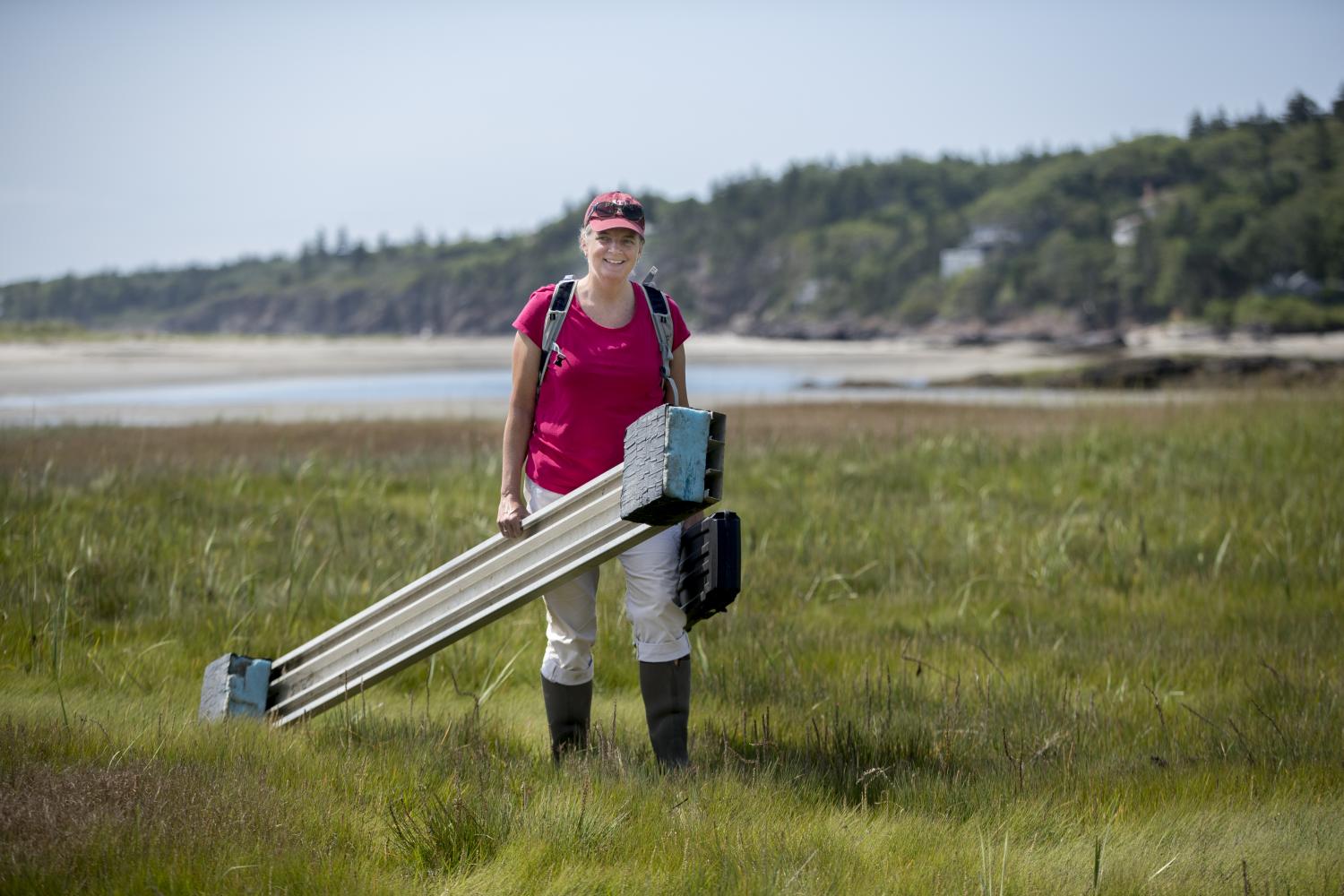
Blue Carbon in Maine: Q & A with Bates College Professor Beverly Johnson
Maine's coastal environment plays an important role in carbon sequestration. We sat down with Bates College Professor Beverly Johnson to learn more about her research on blue carbon ecosystems, and how they can help mitigate climate change.
Q: How did you become interested in studying Maine’s carbon cycle?
A: When I came to Maine as a geology professor 22 years ago, I began to explore the coastal history of Maine as recorded in the geochemistry of organic rich sediments of salt marshes. I was astounded at the amount of carbon in these systems and the rates of carbon burial. In 2011, I was invited to join the Blue Carbon Initiative (BCI) and became aware of the importance of blue carbon ecosystems in the global carbon cycle. I came to see what a powerful role these salt marshes, along with eelgrasses and seaweeds, could play in combating climate change.
This experience and the folks that work on blue carbon, combined with the continued and accelerated warming of our planet over the years, inspired me to shift my research focus towards developing solutions to the climate crisis. Maine is the perfect place to study carbon sequestration in salt marshes because there are so many of them! I have been lucky to have amazing students and colleagues at Bates College to work with on this problem over the years. And I have learned (and am still learning) a lot.
Q: Why should Mainers care about Blue Carbon?
A: We should all care about blue carbon resources around the world. That’s because, much like forests, blue carbon ecosystems (marshes, eelgrass beds and seaweeds) can be powerful carbon sinks. If you compare the same area of forests to salt marshes, for example, salt marshes can sequester significantly more carbon than forests. They are very effective at photosynthesis and then sequestering and storing that carbon for a long period of time.
And in Maine, we have a lot of them. In August 2023, the EPA released its first regional assessment of the carbon sequestered in these vegetated coastal habitats from Maine to Long Island, New York. Maine and Massachusetts contain by far the most acreage of blue carbon habitat of the northeastern states. Maine has almost 54,000 acres of salt marshes and sea grasses or 25% of the overall habitat. We also have the most eel grass of any of the states surveyed, about 34% of the regional total.
So while it’s true our land is dominated by forests, and our total area of coastal carbon sinks is small relative to those forests, we do have these blue carbon resources that pack a serious punch in terms of carbon burial.
Q: What questions about Blue Carbon in Maine would you like to see answered through research?
A: The EPA’s regional assessment has given us a solid baseline of carbon content in the upper 30 cm of soil. But even since then my students at Bates and I have deepened our understanding of Maine’s blue carbon stocks and sequestration. We know that there is much more carbon in marshes than was reported because carbon-rich soils extend 1-2 m into the subsurface. Furthermore, there is more variation in individual salt marshes than is indicated by the EPA report. We are finding that the amount of carbon stored beneath the surface of a salt marsh is not always consistent with what is predicted by the overlying vegetation. In other words, what you see at the surface is not always reflected underneath. So we need to take a closer look.
We also know that degraded salt marshes can release greenhouse gasses (CO2 and CH4) into the atmosphere and adjacent waters, but how much is released and where remains an important area of study. This summer, my colleagues and research group at Bates have added a new portable greenhouse gas analyzer, funded by the Maine Sea Grant, for faster assessments of greenhouse gas uptake and release in tidally restricted salt marshes. It’s already helping us answer these questions.
Q: What are some of the biggest opportunities for enhancing Maine’s marsh blue carbon potential in the near future?
A: Perhaps the biggest step we as a state can take is to understand, appreciate and protect what we’ve already got. This valuable resource is threatened, both by sea level rise — which can drown and destroy the marshes if it happens too rapidly — and other human impacts. I worry that with current future sea level rise predictions that these ecosystems may be threatened with extinction. Eelgrass beds and seaweeds are also incredibly effective at taking up greenhouse gases. The decisions Mainers make over the next 10 years are going to determine whether these important ecosystems persist.
We can also work to restore some of the damage that has been done to our blue carbon resource. Tidal restrictions and human involvement in marshes can leave them degraded, subsided, weak and in the position of releasing (rather than taking up) greenhouse gasses. Restoration of unhealthy Maine marshes can enhance carbon uptake while increasing protection of coastlines and providing healthy habitat for important species that are part of our fisheries and cultural heritage. Marsh restoration is a win-win situation, in other words.